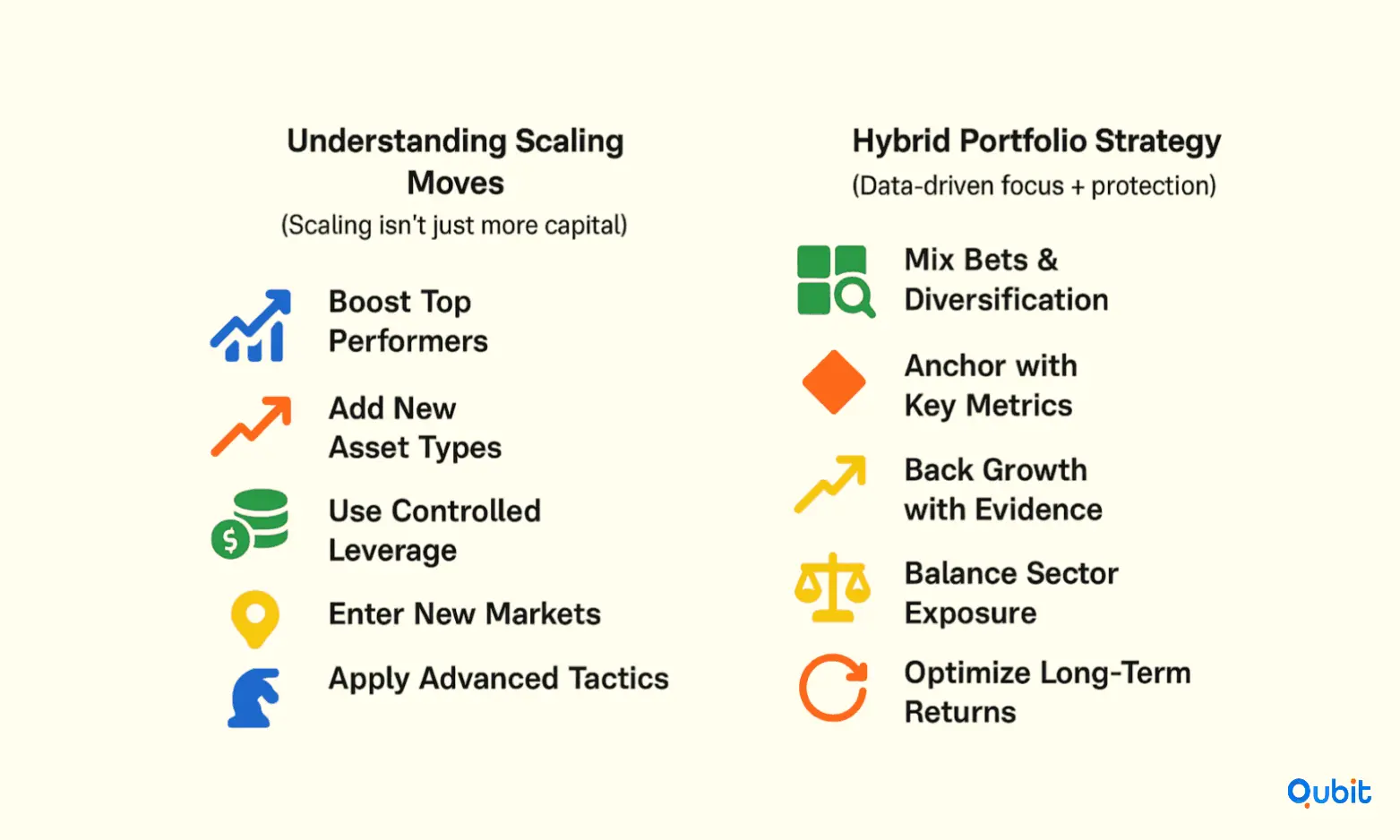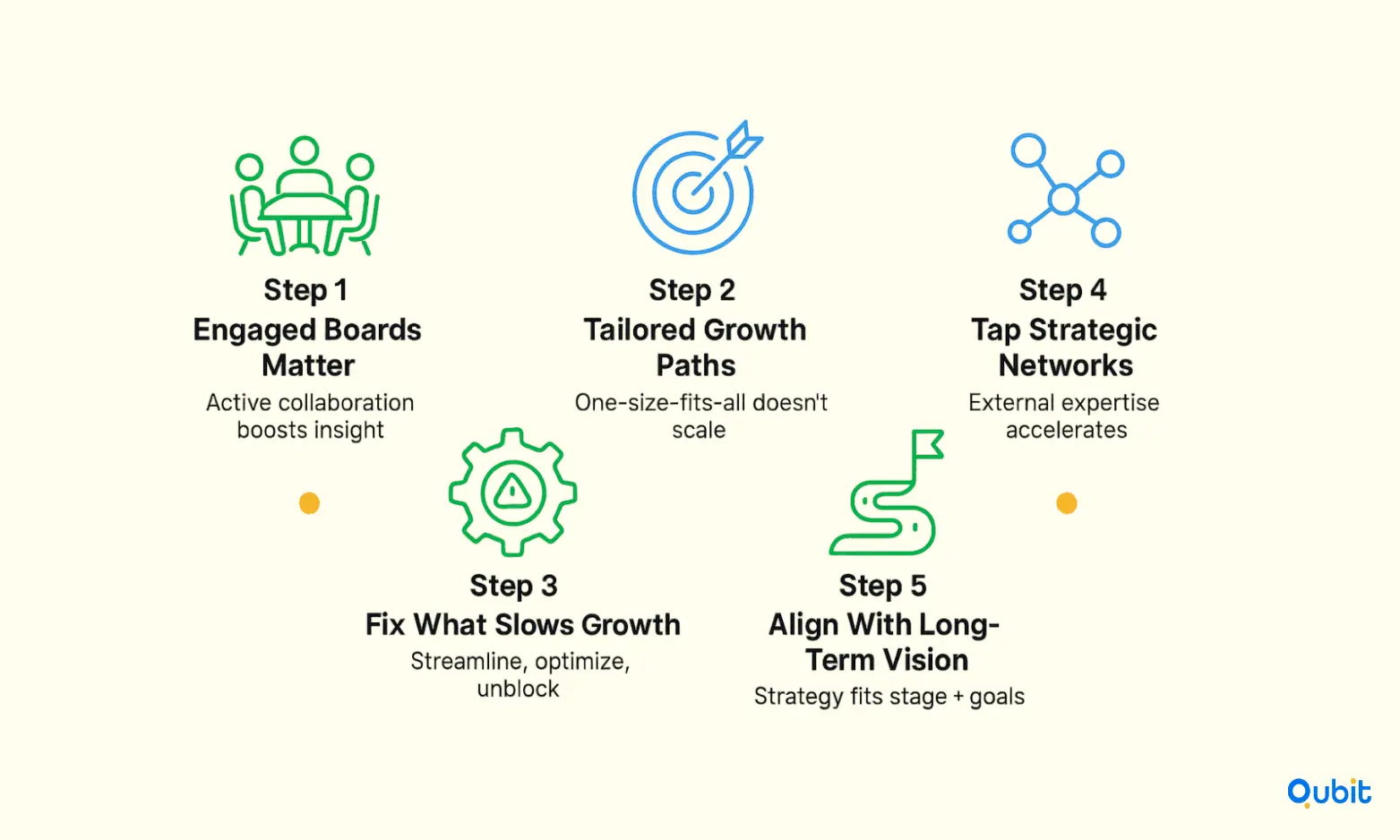Scaling an investment portfolio is both an art and a science. It requires balancing the pursuit of growth opportunities with the discipline of managing risks. Investors often face challenges such as identifying scalable ventures, maintaining diversification, and ensuring consistent returns. This blog will explore actionable strategies to help you expand your portfolio while safeguarding against potential pitfalls.
Your analysis benefits from the foundational perspective of how to do startup outreach for investors, which contextualizes investor engagement within broader portfolio scaling strategies. By understanding the nuances of outreach, you can position yourself to discover high-potential opportunities that align with your growth objectives.
Let’s jump right in and uncover the key strategies for scaling your portfolio effectively.
Understanding What "Scaling" a Portfolio Means
Scaling doesn’t simply mean adding more money into existing investments. It’s about strategically increasing the size, scope, and complexity of your holdings to achieve higher returns over time. This can involve:
- Increasing allocation to high-performing assets
- Adding entirely new asset classes for diversification
- Using leverage in a controlled way
- Expanding into new markets or geographies
- Applying advanced investment strategies (hedging, options, derivatives)
The ultimate goal is to grow the total value of your investments while controlling, and ideally reducing, the risk relative to the potential reward.

Portfolio Construction & Fundamentals
Building a sustainable portfolio requires a thoughtful balance between concentrated bets and diversification. Concentrated investments can yield high returns, but they also carry significant risks. Diversification mitigates these risks by spreading exposure across multiple assets, industries, or geographies, ensuring a more stable growth trajectory. Striking the right balance between these two approaches is essential for optimizing long-term returns.
Hybrid Models: A Strategic Middle Ground
Hybrid portfolio models combine the precision of concentrated bets with the stability of diversification. These models allow investors to allocate resources strategically, focusing on high-potential opportunities while maintaining a diversified safety net. For example, an investor might concentrate on a few high-growth startups while diversifying across industries to reduce sector-specific risks.
Integrating insights from startup-investment-metrics offers a quantitative perspective that refines your understanding of performance indicators in evolving startup portfolios. Metrics such as revenue growth, customer acquisition cost, and market scalability can guide resource allocation decisions, ensuring that concentrated bets are backed by data-driven confidence.
Due Diligence: The Backbone of Strategic Allocation
Thorough due diligence is indispensable for effective portfolio construction. It involves evaluating financial health, market potential, and operational efficiency to identify investments that align with your risk tolerance and growth objectives. This process not only minimizes exposure to underperforming assets but also enhances the likelihood of achieving sustainable returns.
By combining hybrid models with rigorous due diligence, investors can create portfolios that are both resilient and growth-oriented. This approach ensures that every investment decision is grounded in strategic analysis, maximizing the potential for long-term success.
Performance Monitoring & Analytics
Tracking investment performance is a cornerstone of effective portfolio management. By focusing on critical metrics such as Internal Rate of Return (IRR) and Multiple on Invested Capital (MOIC), investors can gain actionable insights into the health and trajectory of their portfolios. AI-driven dashboards, predictive analytics, and real-time monitoring tools are transforming how these metrics are analyzed, enabling smarter, data-driven decisions.
The Role of Key Metrics in Portfolio Management
IRR and MOIC are more than just numbers, they are essential indicators of investment success. IRR measures the efficiency of capital deployment over time, while MOIC provides a snapshot of the total returns relative to the initial investment. For example, consistent monitoring can guide investors toward targeted returns, such as achieving $5,000,000 within five years. These metrics, when paired with advanced analytics, allow for a proactive approach to portfolio management, ensuring that short-term gains align with long-term objectives.
AI-Powered Tools for Enhanced Insights
Modern tools equipped with AI capabilities are revolutionizing performance tracking. Predictive analytics can forecast trends, helping investors anticipate challenges and opportunities. Real-time dashboards simplify the process of monitoring KPIs, including IRR and MOIC, by presenting data in an accessible format. For seamless insights into startup performance, Portfolio tracking tools, such as those available at SeedBlink, offer comprehensive monitoring capabilities.
Balancing Short-Term and Long-Term Returns
Understanding the interplay between short-term and long-term returns is crucial for optimizing investment strategies. For instance, a comparative monthly return metric of 5% can illustrate incremental gains while highlighting the potential for larger returns over extended periods. This balance ensures that immediate performance does not overshadow the broader financial goals of the portfolio.
Exploring themes from secondary-sales-investor adds depth by examining how managing secondary sales interplays with the dynamics of portfolio expansion. Partial liquidity events can be a strategic move to balance risk and capitalize on emerging opportunities.
Scaling Strategies for Growth
1. Dollar-Cost Averaging (DCA) at Scale
Even when you’re increasing investments, spreading your buys over time can reduce the impact of volatility. DCA lets you buy more shares when prices are low and fewer when they’re high, smoothing out your entry price.
2. Sector Rotation
Shifting capital toward sectors with strong momentum or favorable macroeconomic conditions can boost returns. For example, moving from defensive sectors into cyclicals during an economic recovery.
3. Geographic Expansion
Emerging markets, while riskier, often have higher growth potential. Allocating a portion of your portfolio to international opportunities can add a new growth layer.
4. Alternative Assets
Private equity, venture capital, and hedge funds can offer outsized returns compared to public markets. However, these require higher minimums and often lock your capital for years — so they must fit your liquidity needs.
5. Leveraged Strategies
Margin accounts and leveraged ETFs can multiply gains, but they also amplify losses. This should be approached cautiously, ideally with predefined stop-loss rules.
Drawing on startup-exit-strategies enriches your discussion by highlighting methods for timing and executing exits within a scaling investment framework. This resource explores various exit channels and planning techniques, offering insights into how investors can achieve favorable outcomes.
Balancing Short-Term Gains with Long-Term Relationships
While maximizing returns is the ultimate goal, it’s equally important to maintain positive relationships with founders and other stakeholders. A thoughtful exit strategy considers the impact on the company’s future, ensuring that the transition benefits all parties involved.
Investors who prioritize both financial outcomes and ethical considerations often find themselves better positioned for long-term success. This balance fosters trust and opens doors to future collaborations, creating a win-win scenario for everyone.
Proactive engagement and strategic exits are the twin pillars of successful post-investment management. By staying actively involved and planning exits with precision, investors can not only safeguard their portfolios but also unlock their full potential.
Technology & AI Integration
Artificial intelligence is reshaping portfolio management by introducing tools that automate complex data analysis and deliver real-time performance insights. This transformation is particularly evident in Europe’s AI-fueled venture capital (VC) ecosystem, where record funding and groundbreaking startups signal a promising future.
AI-driven systems streamline decision-making by analyzing vast datasets to uncover patterns and emerging trends. Advanced CRM platforms, powered by AI, enable predictive analytics, helping investors anticipate market shifts and optimize their portfolios. These innovations not only enhance efficiency but also provide a competitive edge in identifying high-growth opportunities.
Europe's AI revolution highlights the region's emergence as a global tech hub. With increasing VC investments and a surge in AI startups, the integration of artificial intelligence into portfolio management is becoming indispensable. As AI continues to evolve, its role in shaping investment strategies will only grow, offering unparalleled insights and precision.
For businesses seeking to stay ahead, adopting AI-driven tools is no longer optional—it’s essential for thriving in a data-driven world.
Compliance & Regulatory Considerations
Meeting compliance requirements across multiple jurisdictions presents a unique set of challenges for businesses. From Anti-Money Laundering (AML) regulations to Securities and Exchange Commission (SEC) reporting obligations, organizations must address a complex web of rules that vary by region. These requirements demand meticulous attention to detail and proactive strategies to ensure adherence, particularly as regulatory scrutiny continues to intensify globally.
A robust framework for compliance not only mitigates the risk of penalties but also strengthens governance practices, which are essential for sustainable portfolio management. Effective data protection strategies play a critical role in this process, safeguarding sensitive information against breaches while maintaining regulatory standards. Businesses that prioritize these measures foster trust among stakeholders and demonstrate their commitment to ethical operations.
Strong compliance frameworks are more than a legal necessity—they are a cornerstone of operational resilience. By embedding governance into every layer of portfolio management, organizations can adapt to evolving regulations without compromising efficiency or security.
Value Creation & Portfolio Optimization
Unlocking the full potential of portfolio companies requires more than just cost management. Proactive board engagement, tailored growth strategies, and operational enhancements are essential to drive measurable improvements. By focusing on personalized approaches that align with each company’s stage of development, investors can foster sustainable revenue growth and maximize returns.

Strategic oversight plays a pivotal role in identifying opportunities for value creation. Boards that actively collaborate with management teams can pinpoint inefficiencies, streamline processes, and implement initiatives that directly impact profitability. Additionally, tapping into a strategic network of industry experts and resources can accelerate progress, ensuring portfolio companies remain competitive in dynamic markets.
Beyond operational improvements, aligning growth strategies with long-term objectives is crucial. Whether it’s scaling operations, entering new markets, or refining product offerings, a tailored approach ensures that each company’s unique challenges and opportunities are addressed effectively.
Challenges & Best Practices
Economic uncertainty, data transparency issues, and outdated tracking systems are common hurdles in portfolio management. These obstacles can hinder decision-making and slow down growth, but adopting proactive measures ensures smoother operations and long-term success.
1. Conduct Regular Portfolio Reviews
Frequent evaluations of your portfolio allow you to identify underperforming assets and capitalize on emerging opportunities. By maintaining a consistent review schedule, you can adapt to market changes and refine your strategy to align with evolving goals.
2. Build a Skilled Investor Team
A team with diverse expertise is essential for effective portfolio oversight. Combining analytical skills with industry knowledge ensures informed decisions and minimizes risks. Collaboration among team members fosters innovation and strengthens your portfolio’s resilience.
3. Embrace Up-to-Date Technology
Modern tools simplify portfolio tracking and enhance data transparency. Advanced software solutions provide real-time insights, helping you make data-driven decisions and avoid inefficiencies caused by outdated systems.
For actionable strategies on aligning outreach optimization with portfolio scaling, explore how to improve-startup-outreach. This connection illustrates how refined engagement tactics contribute to overall portfolio growth.
By implementing these best practices, you can overcome challenges and continuously refine your portfolio management approach.
Conclusion
Effective portfolio management requires a blend of robust analytics, proactive risk management, and consistent post-investment engagement. These strategies not only help investors identify opportunities but also ensure long-term growth and stability. Clear, narrative-driven planning plays a pivotal role in aligning investment goals with actionable outcomes, while modern technological tools streamline decision-making and enhance portfolio performance.
As you finalize your strategic approach, remember that we at Qubit Capital are ready to help you identify top investment opportunities through our Startup Scouting service. Let’s elevate your portfolio together.
Key takeaways
- Balanced portfolio construction and diversification are crucial for long-term growth.
- Regular performance monitoring using AI tools enhances decision-making.
- Effective risk management relies on systematic reviews and diversified strategies.
- Clear post-investment engagement and strategic exit planning unlock greater portfolio value.
- Embracing emerging technologies and robust compliance frameworks ensures sustainable scaling.
Frequently asked Questions
What is the best way to manage a startup portfolio?
The best approach involves systematic performance tracking, regular portfolio reviews, and leveraging data analytics to adjust strategies dynamically.






